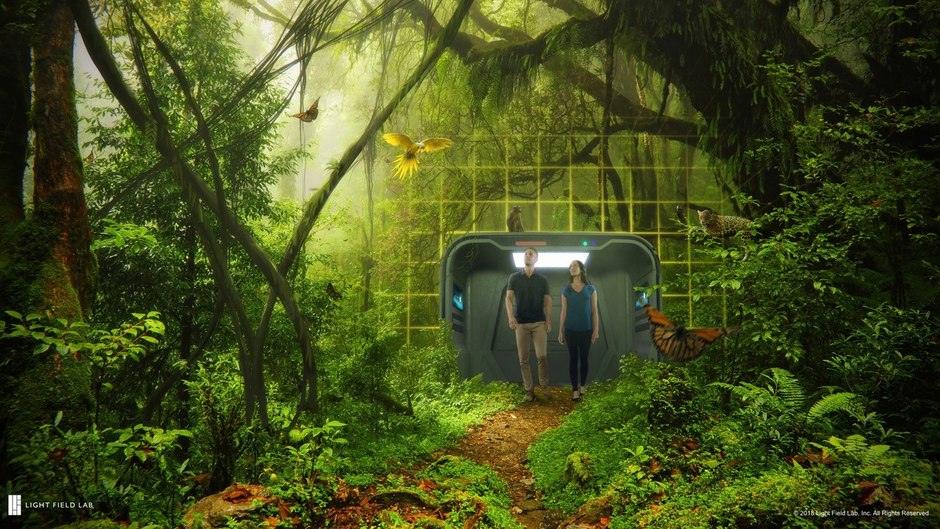Well-Known Member

OUT OF CHARACTER INFORMATION
Intent: To create a technology for future submissions and role-playing.
Image Source: [X]
Canon Link:
Primary Source:
PRODUCTION INFORMATION
Manufacturer: Visanj T’shkali
Affiliation: Closed-Market
Model: Elysium Variable Environment (EVE) Unit
Modularity: Yes
Production: Semi-Unique
Material(s): Absorbital-based Coating, Holoprojectors, Alusteel, Computer Systems
SPECIAL FEATURES:
- Is capable of being configured into the design of any ship having sufficient space available to accommodate.
- Able to project a wide range of highly detailed solid-state and traditional holographic environments and may be adapted to work alongside the Ukko Life Support System to provide any of a variety of atmospheric, environmental, and gravitational settings.
- Special 'treadmill' effect, uses solid-state holographic flooring to allow the experience of a much larger, theoretically-endless space.
- Can be used to recreate various environments, both general and specific locations, interactive holovids, training facilities (including simulations for combat, flight, repairs, medical procedures, etc.), and recreational environs such as swimming pools, beaches, spas, etc. which can allow simulated interaction for exercise, recreation, and athletics.
- Can produce a wide-range of hyper-realistic and elaborate environments and simulations, able to store up to thirty of these inside its computer memory for repeated use.
- Created environments could vary from the practical (i.e. hangars, training facilities, swimming pools, etc.) to natural (i.e. jungle, desert, or icy environs, etc.) to historical re-creations (i.e. battles, historical events, etc.) and more.
- Should safety systems be brought offline, simulations can become dangerous and present a very real risk for injury or death to users.
- If the system should crash, the room reverts to a drab, empty space and is effectively rendered ‘inert’, making it unable to be used until repairs are made, a process normally requiring lengthy and complicated measures requiring dedicated repair facilities. This means that say the user is using their EVE Unit as a hangar, that hangar becomes an empty room and the magnetic shielding that sealed open doors would – if open at the time of the crash – become inoperable and expose anything, and anyone, inside to grave danger. Further, a crashed system could result in other potentially dangerous or costly situations and conditions, making a system-wide failure potentially catastrophic, causing anything from cargo spoilage to being trapped inside to more.
- Power-intensive, the EVE Unit requires a dedicated power generator and extensive wiring, etc. to be fitted into space stations, starships, or buildings after-market, and oftentimes slight inconsistencies or inherent incompatibilities between existing systems and the EVE Unit make system failure more commonplace and more likely. This is especially so in starships, where if added as after-market, those incompatibilities can be provoked more easily with turbulence, combat situations, extreme maneuvering, etc.
Appearing as a dimly-lit and barren room, the EVE Unit can be programmed to create elaborate environments. Anything ranging from simulations of various worlds and ecologies to hangar facilities to training rooms, such as gymnasiums and target ranges, even into simulated aquatic environments or a swimming pool! Most anything can be recreated here, and up to thirty pre-programmed environments may be stored in the dedicated computer system. Originally, the EVE was intended to create exhibits for zoos, however the technology proved too costly to install and maintain in large numbers and initially sold units suffered several high-profile accidents, discouraging potential buyers, and was initially discontinued until Visanj T’shkali purchased the technology from the now-defunct Elysium Environmental Services Company, a small start-up enterprise whose unsolved technical issues and poor reputation had caused it to go bankrupt, making Visanj’s purchase to be at what might be described as ‘bargain basement pricing’. Finding that her Ukko Life Support System could be adapted to replace the former atmospheric, environmental, and gravitational systems used in the EVE Unit, producing more realistic and variable environments, Visanj saw an incredible potential for the upgraded technology. Using archival holo-footage and recordings almost anything could be realistically replicated, creating an immersive experience.
The EVE unit could also be configured to have different-sized entry ports, ranging from a wide personal door to a larger ‘hangar bay’-style door. Further, the EVE unit was made of a unique combination of materials, including absorbital-based coating on the walls, ceilings, and floors to allow blaster fire inside to occur without ricochet and permit weapons training, simulated battlefields, etc. Finally, user safety had been a problem for technicians at Elysium to account for and several accidents experienced by early customers contributed to the company’s failure, but with the help of expert engineers and programmers Visanj was able to solve this problem, and special security protocols and emergency safety systems were included to safeguard lifeforms inside the EVE Unit from being injured or killed accidentally.
Of course, the mind swims at the various potential uses and options for this technology. However, the unusual configuration and types of systems used to make the EVE Unit do not often conform well to other systems such as when installed after-market into existing ships or buildings. This has a notorious habit to lead to systems failure and even full-blown systems crashing, which depending on when, where, and how, could result in very real and very dangerous conditions. Further, failures in the safety systems can also result in potentially life-threatening scenarios.







